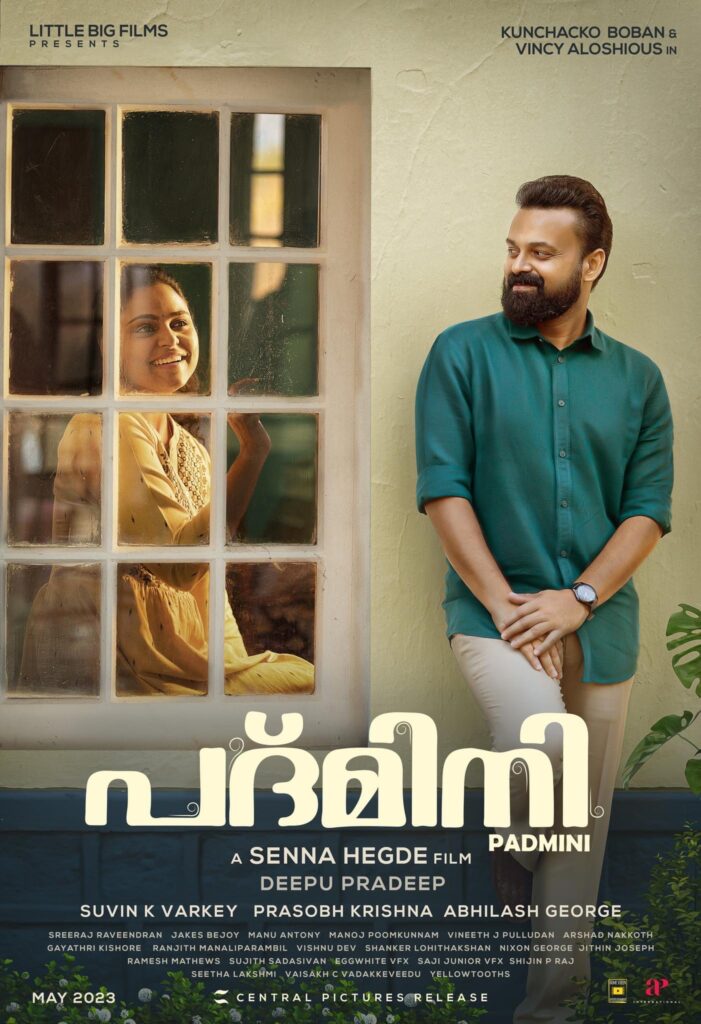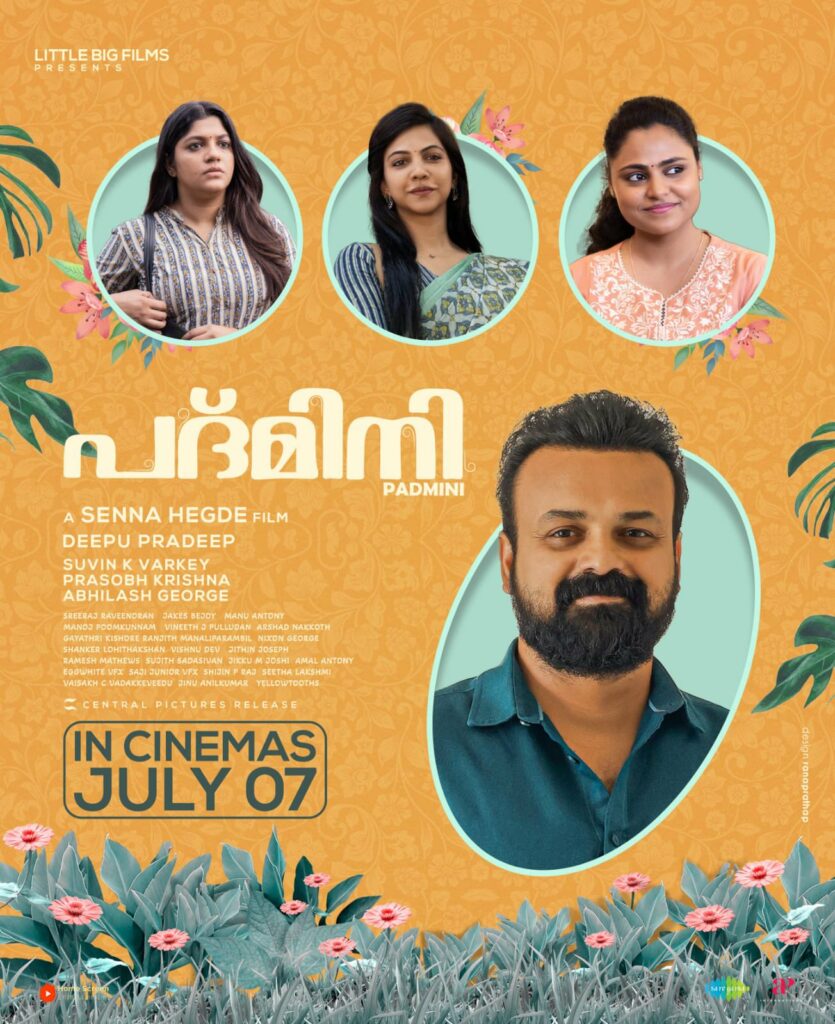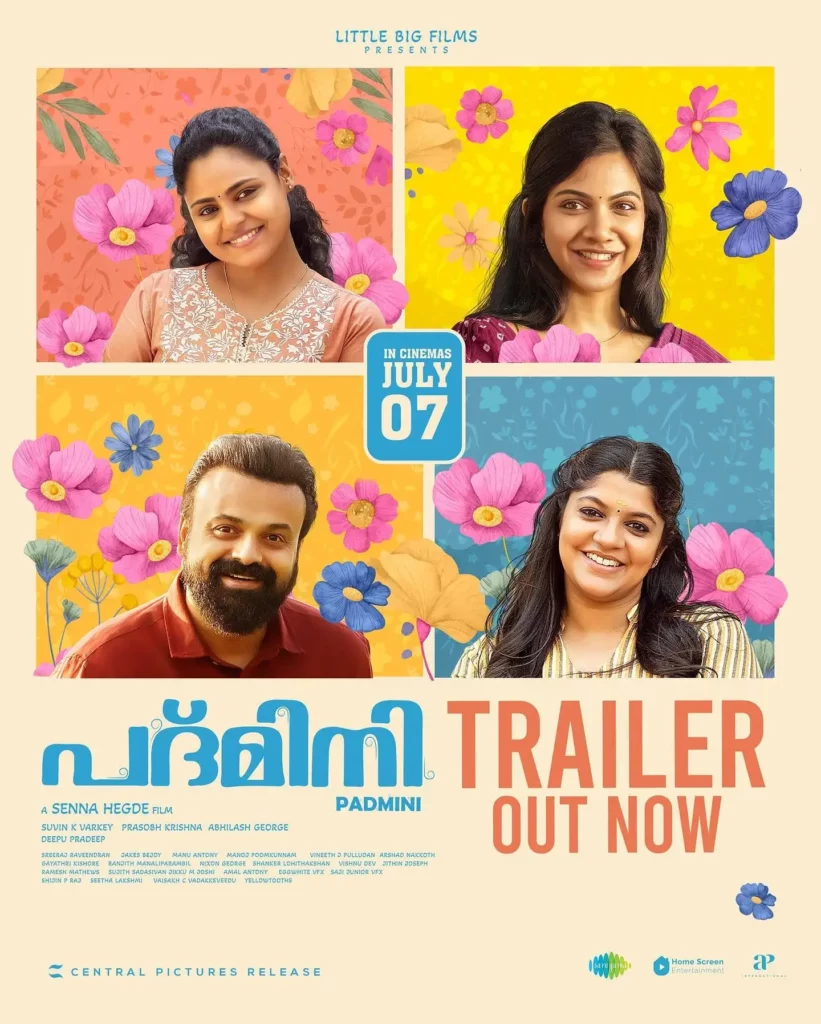Padmini (2023) which made it to the theatres in the first week of July, is the third Malayalam movie of Senna Hegde. He has already established his audience purely by the simplicity of his theme and presentation through his Malayalam debut Thinkalazhcha Nishchayam (2021). Padmini (2023) is a light family entertainer featuring multiple reflections of several social issues especially those surrounding marriage. Owing to its harmless portrayal, the movie is continuing to enrapture the audience without much publicity or advertisement. The movie shares the events in the life of the protagonist Rameshan who had to undergo a tragedy in his first marriage.
Matrimonial crisis
For a country facing severe gap in sex ratio, matrimonial crisis is not new and it is rightly dealt with in the movie which explores the weight of the issue. Therefore, the heroes Rameshan and Jayan, though well settled and eligible bachelors, have to face a tough competition in finding their life partners. Most of the proposals end up catastrophically and hence it portrays the issues in finding a suitable bride which is often quite depressing.

It is quite reflective of the recent marriage surveys and protests that took place in India- the most recent one taking place Karnataka, when the bachelors took part in a walk to a temple to gather public attention. Female infanticide, demand for dowry and the high criteria for brides including the unrealistic beauty standards pose as grave threats while finding a suitable bride.
Marriage of calculations in Padmini
It was the celebrated English novelist Jane Austen who popularised the term ‘Marriage of Calculations’ in her work Pride and Prejudice. The goal of marriage has evolved from the need to find a soulmate to the desire to settle down with a person from a secure background. These types of matings exclude mutual compatibility and above all, the love and self-respect between individuals.

The same issue occurs in the case of Rameshan who marries Smrithi in an arranged marriage planned by their respective families. Though the marriage takes place with a lot of cheerfulness and good wishes, it ends disastrously on the first night of their marriage. The background commentaries in the credit rolls discuss the size of the bride and the weight of Smrithi’s gold jewellery, a planned jibe at the Kerala society by Senna Hegde. Later into the night, Smrithi elopes with her boyfriend and although it takes place with the knowledge of Rameshan, it culminates into his depression and delay in marriage for another two years.
Another instance, when Rameshan’s calculations go wrong is his love affair with Padmini, a new colleague. Padmini, though impressed with Rameshan in her first encounter with him, eyes him with deep intentions. Padmini who is a guest lecturer in the same college as Rameshan hears from the peon that Rameshan is from a wealthy family in addition to being a permanent faculty of the college. Suddenly, after this scene, their liking turns into courtship and later into a marriage proposal backed by their mutual love without much time.
Therefore, this marriage of calculation, too, soon fails due to Padmini’s impatience to wait for Rameshan. Thus, Padmini loses importance for Rameshan just like his first wife, Smrithi. The crucial reason for this fallout is the lack of understanding and love between Padmini and Rameshan- while the former falls for his wealth and status, the latter falls for her youth and looks.
Society – a source of taboos and oppression in Padmini
As a married man whose wife eloped on their wedding night, Rameshan has to endure hardships at home and in his neighbourhood. He becomes a laughing stock to the people around him, which in turn aggravates his pain and dislike for marriage. The jibes of society torment him and reduce his confidence to move on and settle down in another marriage.
The slim chances of suitable proposals reaching men and women who are separated cause serious issues that require grave consideration. Nevertheless, they impact a woman more severely compared to a man.
The scene where Rameshan and his brother visits a local hotel in Smrithi’s village exposes the prejudiced tendencies of society regarding everything, even on issues beyond their reach. Secondly, the taboo Rameshan has to face as a separated man undercuts throughout the film’s narrative. The slim chances of suitable proposals reaching men and women who are separated cause serious issues that require grave consideration. Nevertheless, they impact a woman more severely compared to a man.

Sreedevi, the character played by Aparna Balamurali reminds viewers of the many women who wait for a marriage of her choice, not caring about the age factor. When Sreedevi gets a marriage proposal from Rameshan, she hardly nods, but agrees to meet him as per the wishes of her mother. She does not consider him an equal proposal since he is a separated man, but in the eyes of the society he is more eligible than Sreedevi. This is because Sreedevi has significantly crossed the age limit for a suitable marriage and therefore, she is dealt with like a liability that needs to be cleared out soon. She receives few proposals since she is almost thirty years of age and without much choice left, she agrees to marry Jayan whom she had rejected once.
Here also, Sreedevi unlearns her romantic notions and prepares herself for a realistic life where independent and self-reliant women get alliances only from much older men. She is quite aware of the wide gap in thinking between herself and Jayan who is a misogynistic and possessive man. Here, it is not the mentality of Sreedevi that keeps matrimonial alliances away but the social taboos placed upon independent unmarried women, that too with only a single parent living, that limits her options.
Empowered vs enslaved women in Padmini
Padmini (2023) features a complex set of women who occupy different positions with regards to empowerment all throughout the movie. This instability is the result of the curbing force of society on women. For instance, when Smrithi elopes with her boyfriend, she believes she is empowering herself through her independent decision in life after receiving constant torments from her family. She lives for two long years away from her place evading public scrutiny and moral judgement, but when she is on the receiving end of her boyfriend’s constant doubts, she realises she is in a trapped state. Hence, she wishes to join hands with Rameshan again.

Padmini on the other hand has access to a lot of opportunities and can decide her fate, but she lacks deep moral judgement and hence cannot make the best choices in life.
But, compared to the other women in the narrative, Sreedevi does not limit herself and undo her actions. She breaks up the engagement with Jayan for the welfare of her career and personal life. She becomes a noteworthy character who, by reversing her wrong decisions, inspires women to break free from toxic relationships.
Likewise, Sreedevi though the most empowered of all, also submits herself to the dictations of society out of choice. But, compared to the other women in the narrative, Sreedevi does not limit herself and undo her actions. She breaks up the engagement with Jayan for the welfare of her career and personal life. She becomes a noteworthy character who, by reversing her wrong decisions, inspires women to break free from toxic relationships.
At last, the minor character of Monisha, played by Anashwara Vijayan is a mix of both Padmini and Sreedevi who learns to handle society and at the same time attain her dream life, albeit with social approval.
The movie has successfully critiqued and entertained the society by incorporating several relevant concepts, helping society to expand its horizon a bit more. But, above all, it instructs the audience to take charge and redeem their own life instead of waiting for others to transform it.
About the author(s)
Vidhu (she/her) is an emerging writer with Masters in English language and literature, keen on learning the politics of the world around her. She has dreams to create a career in journalism and writing, where she unburdens her self. She has a great taste for movies from varies geographical spans and pens down poetry in magical charms. She is open to projects or research centring on humanities.






